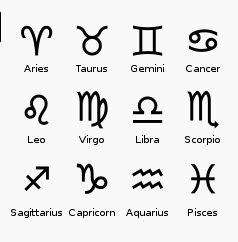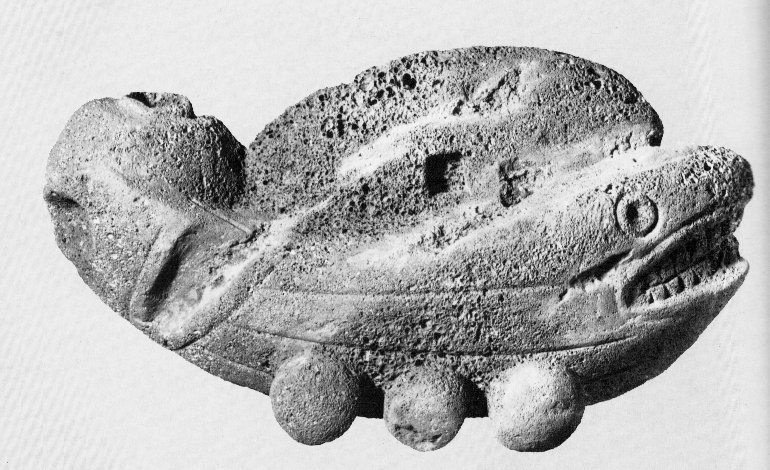3. The 'eye' in front is used in the zodiacal sign of Capricornus, the female Sea-goat:  By the way, also the arrow of Sagittarius is oriented in the forward direction, in contrast to e.g. the 'head' of Leo. However, possibly it is the tuft of hair at the end of his tail, Denebola. The form of the Lion's tail is similar to that of the hair lock of Harpocrates, though reversed. Counting from Capricorn there are 3 months 'in the Sea' followed by 5 months of 'Sun-lit Land'. From Virgo to the the end of the 'Land' there are another 4 months. 3 + 4 + 5 = 12. But far south, below the tropical belt, the signs on the skirt of Mother Earth (Pachamama) - the 'watery eyes' - ought to be used instead. So I think. However, in rongorongo glyphs the inside is not visible and no pupil can be drawn. Though in stone sculpture it was evidently possible:
Perhaps the idea behind the stone fish was to depict the Cetus creature:
I think it is significant that the tail of Cetus has a hole right through. In contrast the stone fish from Easter Island has a hole which serves as an earth oven (open only upwards)
|


